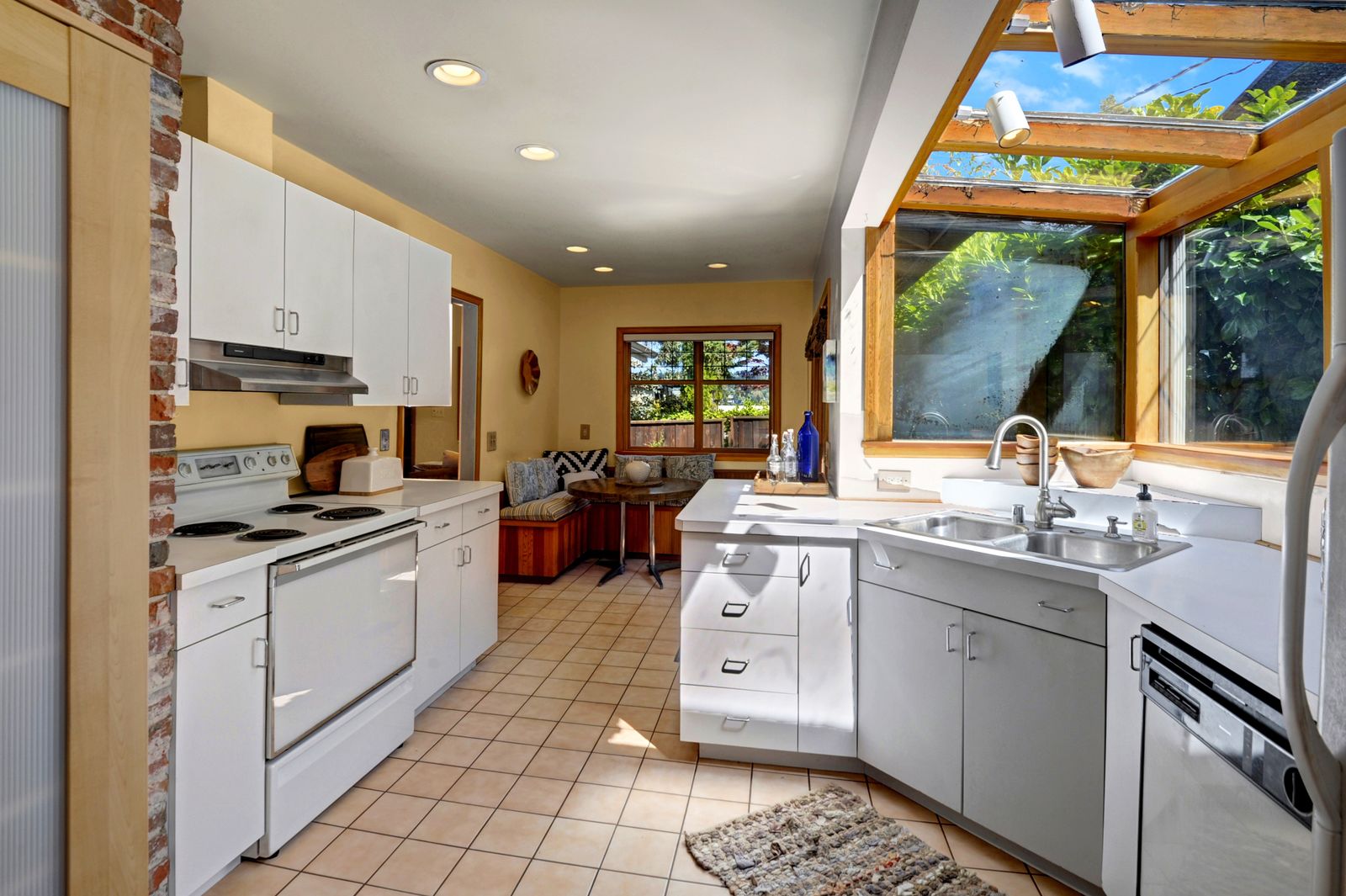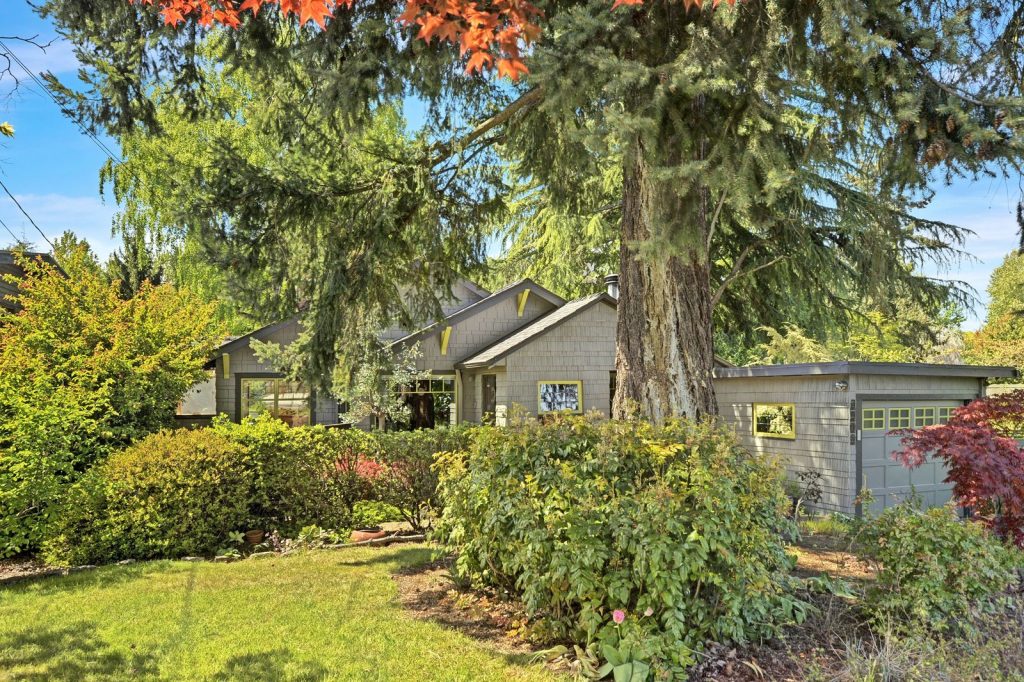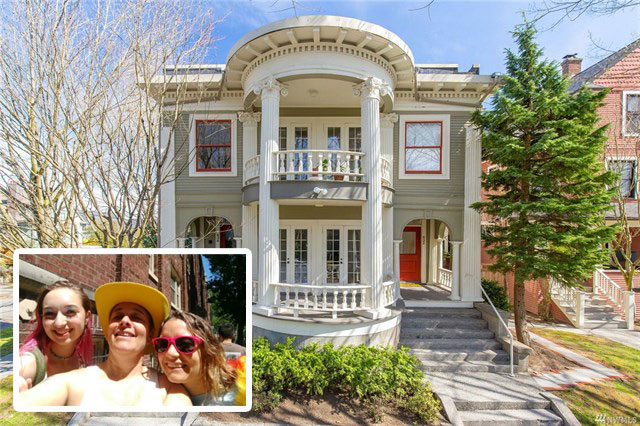Western Washington Real Estate Market Update


The following analysis of the Western Washington real estate market is provided by Windermere Real Estate Chief Economist Matthew Gardner. We hope that this information may assist you with making better-informed real estate decisions. For further information about the housing market in your area, please don’t hesitate to contact your Windermere agent.
ECONOMIC OVERVIEW
Washington State employment slowed to an annual growth rate of 1.7% — a level not seen since 2012 — and continues a trend of slowing that started in the summer of 2018. I was a little surprised to see such a significant drop in employment growth, but it may be due to the state re-benchmarking their data (which they do annually). As such, I am not overly concerned about the lower-than-expected numbers but will be watching to see if this trend continues as we move through the spring months. The state unemployment rate was 4.5%, marginally below the 4.6% level a year ago.
My latest economic forecast suggests that statewide job growth in 2019 will be positive but is expected to slow. We should see an additional 84,000 new jobs, which would be a year-over-year increase of 2.2%.
HOME SALES
- There were 13,292 home sales during the first quarter of 2019. Year-over-year, sales were down 12.3% and were 23.4% lower than the fourth quarter of 2018.
- It is quite likely that part of the slowdown can be attributed to the very poor weather in February. That said, anecdotal information from our brokers suggests that March was a very active month and I expect to see sales rise again through the spring selling season. Notably, pending home sales were only off by 3.5% from the first quarter of 2018.
- All counties contained in this report saw sales drop when compared to a year ago. The greatest drops were in the relatively small counties of San Juan, Clallam, Island, and Kitsap.
- The decline in interest rates during the first two months of the quarter nudged many home buyers off the fence. I believe this will cause a significant bump in sales activity in the second quarter numbers.

HOME PRICES
- In combination with the factors discussed earlier, the 40% increase in listings has caused home price growth to taper to a year-over-year increase of 3.3%.
- Home prices were higher in every county except Clallam. While the growth of prices is slowing, the strong local economy, combined with lower interest rates, will cause home prices to continue rising through 2019.
- When compared to the same period a year ago, price growth was strongest in San Juan County, where home prices were up 36.4%. Only one other county experienced a double-digit price increase.
- As I have said for quite some time now, there must always be a relationship between incomes and home prices, and many areas around Western Washington are testing this ceiling. That said, the region’s economy continues to perform well and incomes are rising, which, in concert with low interest rates, will allow prices to continue to rise but at a significantly slower pace.

DAYS ON MARKET
- The average number of days it took to sell a home matched the same quarter of 2018.
- Pierce County was the tightest market in Western Washington, with homes taking an average of 40 days to sell. There were seven counties that saw the length of time it took to sell a home drop compared to the same period a year ago. Market time rose in seven counties and one was unchanged.
- Across the entire region, it took an average of 61 days to sell a home in the first quarter of 2019. This matches the level seen a year ago but is up by 10 days when compared to the fourth quarter of 2018.
- In the last two Gardner Reports, I suggested that we should be prepared for days-on-market to increase, and that is now occurring. Given projected increases in inventory, this trend will continue, but this is typical of a regional market that is moving back toward balance.

CONCLUSIONS

This speedometer reflects the state of the region’s real estate market using housing inventory, price gains, home sales, interest rates, and larger economic factors. I am again moving the needle toward buyers as price growth moderates and listing inventory continues to rise.
I do not see any clouds on the horizon that suggest we will see a downturn in sales activity in 2019. That said, this will be the year we move closer to balance. Buyers who were sidelined by the significant increase in listings in the second half of 2018 are starting to get off the fence as mortgage rates drop. I foresee a buoyant spring market ahead.

As Chief Economist for Windermere Real Estate, Matthew Gardner is responsible for analyzing and interpreting economic data and its impact on the real estate market on both a local and national level. Matthew has over 30 years of professional experience both in the U.S. and U.K.
In addition to his day-to-day responsibilities, Matthew sits on the Washington State Governors Council of Economic Advisors; chairs the Board of Trustees at the Washington Center for Real Estate Research at the University of Washington; and is an Advisory Board Member at the Runstad Center for Real Estate Studies at the University of Washington where he also lectures in real estate economics.
NEW LISTING: Seward Park Bungalow


8415 Island Dr S.
Seattle, WA 98118
$699,950
- 3 bedroom
- 1.75 bath
- 2,190 SQFT
- MLS #1435769
- Taxes: $6,116 (2018)
- Lot Size: 5,644 SQFT
- Year Built: 1919
- Style: 1 Story W/Bsmnt.
- Views: Territorial, Lake
- Community: Seward Park
Check out a little slice of paradise; this well cared-for 1919 bungalow sits on a dead-end street and backs onto a green belt, with a short trail through the woods to Lake Washington. Yet, access to the city and freeways is a breeze. Fir windows and doors throughout, an airy living room with vaulted ceiling, efficient wood burning stove and bonus loft. Sunny eat-in kitchen opens to private deck with lake view. Finished basement with kitchen and bath, a perfect Airbnb. Lovely trees and shrubs surround this special home.
Information provided as a courtesy only, buyer to verify. For more, go here.
BUYER SUCCESS STORY: Raine Comes Home to Capitol Hill


I am always thrilled to be able to reconnect with past clients and assist them in their life transitions.
I first helped Raine Dozier and her partner buy a house in Columbia City many years ago. At that time, Raine was working on her P.H.D. and working part-time. A few years later, she landed a good job in Bellingham at Western University, so she bought a house and moved there with her youngest daughter who was still in school.
However, Raine has always been more of a big city person and she really missed Seattle. As soon as Rye, her daughter, started her first year in college, Raine returned to Seattle and rented a place, very close to her oldest daughter, in her old stomping ground of Capitol Hill. She had to teach just two days a week in Bellingham, so it felt quite doable.
The more time she spent on the hill, the more she realized that she wanted a permanent home, so she contacted me, and we started looking at condos, as houses were way too expensive.
Her main requirement was that she be allowed to have a piano so that her daughter, who is majoring in music, could practice when she was home from university. This limited the potential places as it needed to be on the ground floor in a place that allowed a piano to be played several hours a day. Raine also needed to have some space for her daughter to stay but could only afford a one-bedroom as she was drawn to beautiful historic buildings which tend to be more expensive than newer ones.
We looked at a few places and considered putting offers on two, however one had a $2,000,000 assessment to re-pipe the whole building. That was huge and it just felt like a major risk should the assessment go way up given so many unknowns in such an old building. The other unit was on the first floor and a piano was a big no go.
Raine was resigned to the fact that it could take a long time to find the right place. However, she just happened to go into an open house close to her apartment and she fell in love with it. It was perfect as it was on the ground floor, in a beautiful old building with two good bedrooms and the piano was not a deal breaker.
The problem was that it was more money than she had wanted to spend and she was told by the agent holding it open that someone had already written an offer.
Raine called me, and I called the listing agent straight away. Luckily it was an agent I had worked with many times before, and he told me that he had received an offer with an expiration date of 11 am the next morning.
By this time, it was late in the day, and Raine had gone out to dinner. I promised him that we would have an offer before 11 am in order to compete, but I wanted to have Raine sleep on it to decide if this was the place she really wanted.
The next morning Raine said she wanted to go for it. I had prepared the paperwork the night before, so that we could act quickly. We crafted a competitive offer and Raine wrote a great letter, explaining why she loved the condo, especially as it had two bedrooms. Included was this wry comment, “Rye is a classical pianist so I anticipate some periods of underemployment.” Like many parents these days, Raine could see her daughter living with her after she graduated college.
The other offer was higher but Raine’s letter really spoke to the sellers. My proven track record with the listing agent also really helped, as the other buyer’s agent was an unknown who was very aggressive.
I am so happy that Raine finally has a permanent home for her and her daughter. And coming full circle, it turns out Rye was born on Capitol Hill, in the last house standing behind the Starbucks on Denny and Olive.
Congratulations!
Planning for the Life Expectancy of Your Home


Nothing in life lasts forever – and the same can be said for your home. From the roof to the furnace, every component of your home has a lifespan, so it’s a good idea to know approximately how many years of service you can expect from them. This information can help when buying or selling your home, budgeting for improvements, and deciding between repairing or replacing when problems arise.
According to a National Association of Home Builders (NAHB) study, the average life expectancy of some home components has decreased over the past few decades. (This might explain why you’re on your third washing machine while Grandma still has the same indestructible model you remember from childhood.) But the good news is the lifespan of many other items has actually increased in recent years.
Here’s a look at the average life spans of some common home components (courtesy of NAHB).
Appliances. Of all home components, appliances have the widest variation in life spans. These are averages for all brands and models and may represent the point which replacing is more cost-effective than repairing. Among major appliances, gas ranges have the longest life expectancy, at about 15 years. Electric ranges, standard-size refrigerators, and clothes dryers last about 13 years, while garbage disposals grind away for about 10 years. Dishwashers, microwave ovens, and mini-refrigerators can all be expected to last about nine years. For furnaces, expect a lifespan of about 15 years for electric, 18 for gas, and 20 for oil-burning models. Central air-conditioning systems generally beat the heat for 10 to 15 years.
Kitchen & Bath. Countertops of wood, tile, and natural stone will last a lifetime, while cultured marble will last about 20 years. The lifespan of laminate countertops depends greatly on the use and can be 20 years or longer. Kitchen faucets generally last about 15 years. An enamel-coated steel sink will last five to 10 years; stainless will last at least 30 years; and slate, granite, soapstone, and copper should endure 100 years or longer. Toilets, on average, can serve at least 50 years (parts such as the flush assembly and seat will likely need replacing), and bathroom faucets tend to last about 20 years.
Flooring. Natural flooring materials provide longevity as well as beauty: Wood, marble, slate, and granite should all last 100 years or longer, and tile, 74 to 100 years. Laminate products will survive 15 to 25 years, linoleum about 25 years, and vinyl should endure for about 50 years. Carpet will last eight to 10 years on average, depending on use and maintenance.
Siding, Roofing, Windows. Brick siding normally lasts 100 years or longer, aluminum siding about 80 years, and stucco about 25 years. The lifespan of wood siding varies dramatically – anywhere from 10 to 100 years – depending on the climate and level of maintenance. For roofs, slate or tile will last about 50 years, wood shingles can endure 25 to 30 years, the metal will last about 25 years, and asphalts got you covered for about 20 years. Unclad wood windows will last 30 years or longer, aluminum will last 15 to 20 years, and vinyl windows should keep their seals for 15 to 20 years.
Of course, none of these averages matter if you have a roof that was improperly installed or a dishwasher that was a lemon right off the assembly line. In these cases, early replacement may be the best choice. Conversely, many household components will last longer than you need them to, as we often replace fully functional items for cosmetic reasons, out of a desire for more modern features, or as a part of a quest to be more energy efficient.
Are extended warranties warranted?
Extended warranties, also known as service contracts or service agreements, are sold for all types of household items, from appliances to electronics. They cover service calls and repairs for a specified time beyond the manufacturer’s standard warranty. Essentially, warranty providers (manufacturers, retailers, and outside companies) are betting that a product will be problem-free in the first years of operation, while the consumer who purchases a warranty is betting against reliability.
Warranty providers make a lot of money on extended warranties, and Consumers Union, which publishes Consumer Reports, advises against purchasing them. You will have to consider whether the cost is worth it to you; for some, it brings a much-needed peace of mind when making such a large purchase. Also, consider if it the cost outweighs the value of the item; in some cases, it may be less expensive to just replace a broken appliance than pay for insurance or a warranty.
Windermere & YouthCare: Helping Homeless Youth


For the past 30 years, Windermere Real Estate has supported more than 500 non-profit agencies dedicated to helping low-income and homeless families through donations from the Windermere Foundation. We have worked with many worthy organizations that provide shelter, food, youth/children’s programs, emergency assistance, education/counseling, school assistance, scholarships, and other services to those in need in our communities.
One organization that we have been honored to partner with these past three years is YouthCare, a non-profit in Seattle, Washington that provides critical services to homeless youth. YouthCare works to end youth homelessness and to ensure that young people are valued for who they are and empowered to achieve their potential.
Three years ago, we embarked on a campaign to #tacklehomelessness with the Seattle Seahawks and YouthCare. Together, our goal was to bring resources to help homeless youth move forward, and to inspire our neighbors and friends to take action. Windermere committed to donating $100 for every Seahawks home game defensive tackle to YouthCare. During the three seasons of the campaign, a total of $98,700 was raised to help fund housing and residential care for homeless youth.
In addition to the #tacklehomelessness campaign, Windermere offices throughout the greater Seattle area came together each fall to hold a “We’ve Got You Covered” winter drive for YouthCare. Over three years, a combined total of over 14,600 hats, gloves, scarves, socks, and an assortment of other accessories and cash donations were collected through the drives.
“We fielded a mountain (literally!) of donated items from the Windermere Community,” said Jody Waits, Development & Communications Officer for YouthCare. “Windermere understands the power of home, and that a safe and welcoming place to call your own causes joy. We are so honored to have cheered for the Hawks and had this incredible partnership to tackle homelessness, together! While our friendship is evolving, we know that, united, we’ll always be working to help homeless youth be safe today and build a thriving future for tomorrow. Thank you!”
Although our campaign with YouthCare has come to an end, Windermere is still actively involved with the non-profit. Cassie Walker Johnson, managing broker at the Windermere Wedgwood office, is a member of YouthCare’s Board of Directors.
Windermere is proud to partner with non-profits like YouthCare, and we are thankful for all the generous donations made to the Windermere Foundation, which enable us to continue to support them.
If you would like to learn more about the Windermere Foundation, please visit windermerefoundation.com.
YOU’RE INVITED: Spring Art Show at Windermere Mount Baker


Dear friends,
Please join my office, Windermere Real Estate Mount Baker on Thursday, April 18, from 5:30 – 8:30pm for a reception with our spring artists, Lori and Frank Duckstein. Refreshments will be served. Please let me know if you’ll be able to attend, and see more about the artists below.
ABOUT THE ARTISTS

Lori Duckstein:Many of my images are of places where I’ve been and/or would want to wander. Images of landscapes and landscapes with houses. Perhaps because my father was an architect and I spent a lot of time as a child watching him draw houses and in crawling around construction sites, I became aware early on of the singular importance of these structures – in enclosing, protecting and soaking up the essence of the people they contain. As for the figurative work, the aim is to express personal interiors, captured moments, moments of personal connections.
I enjoy exploring through paint, landscapes and cityscapes where possibilities lie behind every door or tree or bend in the road. Stories abound there – and in the figural work as well.
Stylistically, I appreciate the power in simplicity of form, which I try to incorporate in both my landscapes and figural work. My goal in painting is simply to express my vision and create a response in the viewer.
While I sometimes work with multi-media materials or oil pastels on paper, most of my work is in acrylics. Basically, I enjoy employing the most direct route between my vision and the canvas or paper.

Frank Duckstein: I have been interested in Photography for a long time. In the past I concentrated more on the process that is (or was) happening in the darkroom. Over the last few years I have accepted the fact that digital photography in combination with the sophisticated software that is available these days, allows photographers a very similar level of creativity and spontaneity in the approach to selection and execution of images.
I was introduced to taking pictures and to the concept of looking at one’s surroundings through a viewfinder by my mother, who studied photography and used the end of the Berlin blockade as one of her study-exercises. Those black and white images that she created in 1948 are in my mind an ideal combination of artistic interpretation, personal view, and historic documentation.
A Cautionary Tale. Don’t take your sewer line for granted!


Sewer line repairs can be a costly nightmare; read this horror story and take note of some tips to make sure this does not happen to you
Sewer lines are something we don’t really think about until there is a problem, and the lines back up, usually on Thanksgiving or when we are on vacation! Sewer lines in old house are made of clay or concrete and they do not last forever, but there are measures a homeowner can take to keep an old line in good shape.
Recently a seller of mine ended up spending a great deal of money on a sewer line repair.
She had a huge Yew tree right next to her deck. It was not even on her property but because her sewer line ran right under it and connected with the neighbors, it was her responsibility to maintain that section of line. She mentioned that she had had issues years ago, but once the line had been roto- rooted she had not had any other problems.
When the buyer had a sewer scope the line was blocked, right under the Yew tree, so a company was hired to clear the line. They were able to clear it some, but the line was obviously broken, and they could not go very far. A day later the next- door neighbor had sewage coming into their semi-finished basement which resulted in the threat of a law suit!
My poor client! As if the broken line and the cost wasn’t stressful enough, let alone this threat!
Luckily, we were able resolve the issue, as given the fact the line was already broken, they realized it could have happened at some point anyway
As my client owned the first section of line, she had to pay for the full repair on that part of the line, plus half of a second repair on the next door neighbor’s property, and she would have had to pay another 1/3 if the line on the third home’s property was broken, but luckily it was ok. If you share a line and you are at the beginning, you end up bearing the brunt of the costs!
However, a lot of this could have been avoided had the Yew been removed, or at least the line treated with Rootx, a biodegradable product that kills roots intruding into the line.
It is wise to have your sewer line scoped every couple of years to make sure it is clear of roots and and also to use Rootx. You can also insure your sewer line and water line through the National Water Company in Washington State; they cover up to $10,000 of repairs on a sewer line. Your homeowner’s insurance will not cover these lines.
If you are not sure whether you have a shared line, you can check that out on the Seattle Department of Construction and Inspections website and look for “sewer card.”
Being pro-active can save you a lot of money!
YOU’RE INVITED: Annual Wine Tasting & Lawn Bowling Event


Thursday, May 9th
6 – 8:30 pm
Jefferson Park Lawn Bowling Club
4103 Beacon Ave. South | Seattle, WA 98
A fun evening of wine tasting and lawn bowling. Great wines – including a fabulous award winner! If you find something you like, purchase it direct from the vintners at a discount. We will also have yummy appetizers. And free drawings for a delicious bottle to take home.
Clubhouse and greens are located west of the Jefferson Park Golf clubhouse and driving range. Turn west on to a road just south of the golf clubhouse, alongside the putting green. You’ll wind around a bit to reach the lawn bowling clubhouse.

 Facebook
Facebook
 X
X
 Pinterest
Pinterest
 Copy Link
Copy Link












